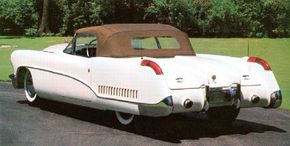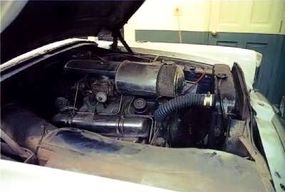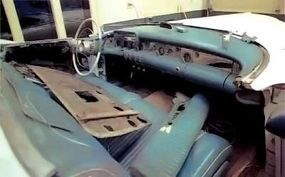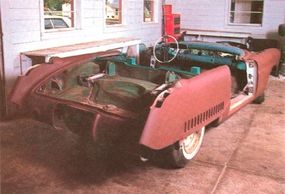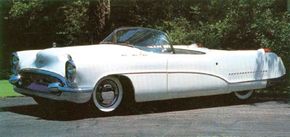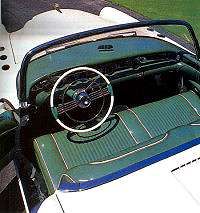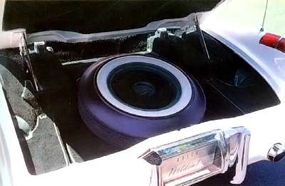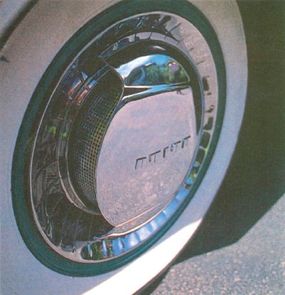The fiberglass-bodied 1953 Buick Wildcat that starred at the 1953 Motorama should have been destroyed, per General Motors edict. But dream car collector Joseph E. Bortz somehow located that long-missing show car and restored it to its past glory.
Advertisement
During the 1950s, "dream cars" popped up with the frequency of the annual model change. General Motors started the whole trend with the Buick Y-Job, a Harley J. Earl design that dated back to 1938 and predicted the styling of the 1942 Buick.
By 1953, General Motors was the master at whetting the public's appetite for dream cars via its annual Motorama show. This was the first time it traveled to various cities, and it gained tremendous publicity for General Motors. Although the corporation generally referred to its futuristic show cars as "experimental automobiles," the public called them dream cars, and General Motors also did so on occasion.
Whatever the term, General Motors obliged the curious by fielding a raft of cars for the 1953 Motorama. Kicking off at New York's Waldorf Astoria on January 16, the show later toured Chicago, Miami, Los Angeles, San Francisco, Dallas, and Kansas City.
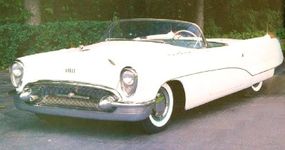
Best known among the cars shown in 1953 was the fiberglass-bodied two-seater Chevrolet Corvette. It made such a mark that it was in production (in small numbers) by July 1 in Chevrolet's Flint, Michigan plant. Also seen that year was the Oldsmobile Starfire, a sleek four-passenger convertible that was to lend its name and certain styling elements to production Oldsmobiles beginning in 1954.
Cadillac fielded two cars, the Orleans, a basically stock production model that was converted into a four-door hardtop, a body style that would become reality in 1955. The Cadillac LeMans, a two-passenger "sports prototype" convertible on a 115-inch wheelbase, featured fiberglass construction and carried styling that previewed the 1954 models.
Pontiac took a different approach with the Parisienne, a "town car" with a formal roofline and an open section over the chauffeur's area. Although based on the 1953 Chieftain, the 1930s body style was more a trip into the past than the future. Also seen in 1953 was the Firebird I, a jet plane on wheels that would see future renditions at subsequent shows.
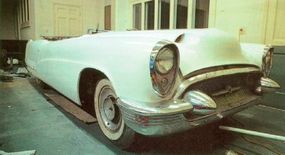
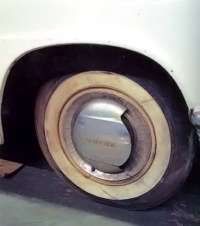
Buick, of course, was not about to be left out. Its contribution was the Wildcat, a two-passenger convertible that Buick referred to as a "Trial flight in Fiberglass and steel." It was also billed as a "Prototype of future cars." And, indeed, it was both.
A special brochure handed out at the Motorama explained the philosophy behind the Wildcat: "Buick by-passes time and tradition to bring your 'dream car' closer. Buick's progressive search for finer styling and better cars for America's motorists enters a new era with presentation of the revolutionary new sports convertible -- the Wildcat -- featuring a Fiberglass body.
"Adoption of easily-molded Fiberglass for the bodies of Buick experimental models shortens the time between new styling ideas and their incorporation in cars that can be tried and tested. And presentation of these futuristic models for public view -- as in the case of the Wildcat and XP-300 -- affords an opportunity to 'pre-test' the motorists' reaction to various styling features incorporated in those cars."
For more on the styling of the Buick Wildcat, continue to the next page.
For more information on cars, see:
- Classic Cars
- Muscle Cars
- Sports Cars
- Consumer Guide New Car Search
- Consumer Guide Used Car Search
Advertisement

